Table of Contents
One of our biggest motivations for crisscrossing the globe? To get inspired by all that we eat. Learning from the talented food lovers we encounter — be it at a tiny, family-owned panini joint in Florence or a vibrant tequila bar in Baja California — gets us amped to cook recipes inspired by our travels.
It’s no secret that we love Italy, so we travel there as often as we can. But, we can’t always be street-food crawling in Milan, day-tripping to Lake Como, or wine tasting in Franciacorta as we do on our boutique group trips to Italy.
The next best thing? Cooking classic Italian recipes, inviting friends over, and daydreaming about travel.
Classic Italian Recipes To Cook At Home
Here are more than 20 classic Italian recipes to give you all the feel when you can’t be in Italy in real life.
Classic Italian Coffee Drink Recipes

{Caffe Shakerato} Classic Italian Iced Espresso Recipe
For many of us, there’s no better way to jump-start the day than some quality coffee. For all of us, there’s no better way to beat the summer heat than a refreshing drink. Enter the caffe shakerato (pronounced shake-err-ahto): a drink made by shaking a shot of espresso, ice, and simple syrup in a cocktail shaker until it’s frothy and ice cold. The shakerato is like Italy’s answer to iced coffee but with a decidedly Italian twist.
Caffe Tazza D’Oro is a classic place to try a caffe shakerato in Rome; otherwise, go ahead and make it yourself! The only decision to make? The sweetness level. It’s a personal preference, so add as much or as little simple syrup as you’d like (or order it senza zucchero in Italy if you don’t want sugar)!

{Bicerin} Layered Mocha Coffee Recipe
If you’re a fan of European-style hot chocolate (we’re talking melted ganache, not hot cocoa) and like a mocha, you’ll want to try the layered mocha-like coffee drink known as the bicerin (pronounced bee-chur-reen). Hailing from Turin, aka the chocolate capital of Italy, you can find the bicerin served across the city, but Caffè al Bicerin (where it is claimed to have been created) is the most classic spot.
With layers of dark espresso, velvety hot chocolate, and freshly-whipped cream, this next-level caffeine fix packs both a sugar and caffeine jolt. If you make it yourself, pour in the ingredients with care (like so) so there is a layer of hot chocolate followed by a shot of espresso and topped with a layer of whipped cream.
Classic Italian Cocktail Recipes

Classic Aperol Spritz Cocktail Recipe
To call aperitivo Italian happy hour doesn’t quite do it justice — it’s a time of day that’s just as much about meeting up with friends as it is about cocktails. Oh, and there are almost always some small bites involved.
One of the highlights of the Salt & Wind group trips to Italy is always aperitivo, whether in the shadow of Milan’s duomo or on a lakeside dock in wine country. And one of our all-time favorite ways to toast aperitivo? The Spritz is arguably the most classic aperitivo cocktail in the book.
Hailing from Northeastern Italy, the classic Spritz is merely an amaro like Campari or Aperol mixed with white wine (sometimes flat and sometimes sparkling wine), and it’s as refreshing as it is delicious.
It’s hard to go wrong with this, a classic Aperol Spritz recipe, but for a twist, try the white Spritz known as the Hugo or any of these Spritz variations.
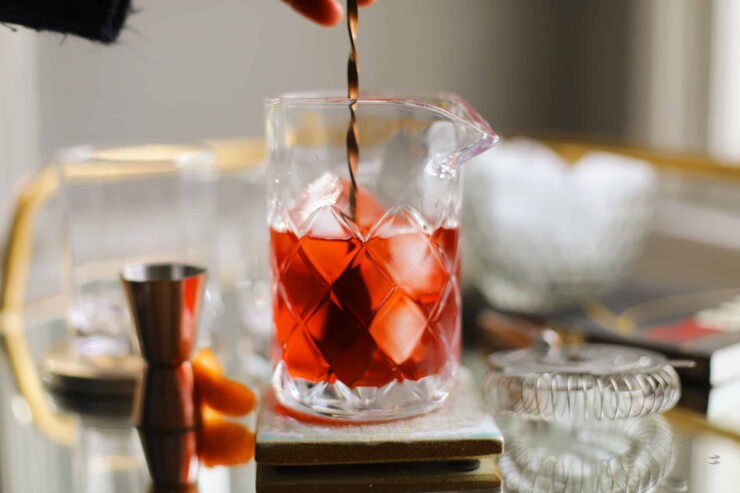
Classic Negroni Cocktail Recipe
The story goes that back in 1919 Count Negroni (yes, that was his real name!) asked a bartender at the Caffe Casoni in Florence to make an Americano cocktail with gin instead of soda water. To this day, a classic Negroni cocktail is equal parts gin, sweet red vermouth, and Campari served on the rocks and garnished with an orange peel.

Classic Negroni Sbagliato Cocktail Recipe
Another one of our favorite classic aperitivo cocktails is the Negroni Sbagliato. This cocktail isn’t that well known outside of Italy, but it’s like a hybrid of a Spritz and a Negroni (with equal parts sparkling wine, sweet vermouth, and Campari), so it’s a great variation on either drink.
Cocktail folklore has it that a bartender at Bar Basso in Milan created the Negroni Sbagliato when he accidentally used sparkling wine instead of gin while making a classic Negroni. It’s known as sbagliato because that means “messed up” or “mistaken” in Italian.
The talented barman and owner of Bar Basso like made this move on purpose so, if you ask us, it’s a very happy accident!
Classic Italian Appetizer Recipes
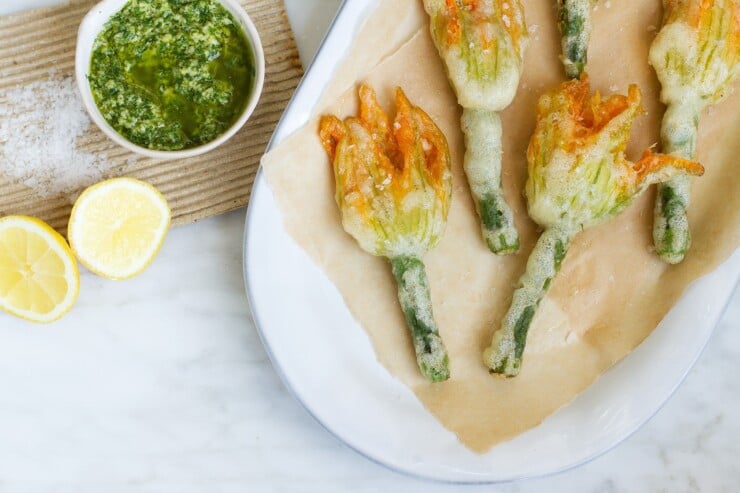
{Fiori Di Zucca Fritti} Classic Italian Fried Zucchini Flowers Recipe
One thing is for sure: when you’re talking classic food in Rome, fried food has got to be near the top of the list. This Italian city has all sorts of classic fried food, from fried artichokes to one of our favorites, fried zucchini flowers.
To satisfy that Roman fried food fix, we love Rome food expert Kate Parla’s elegant take on zucchini flowers stuffed with ricotta, herbs, and lemon zest.
The one recipe we love to fry is worth it every time. Though they’re originally from Calabria, these fried zucchini flowers can be found just about anywhere during the summer in Italy.
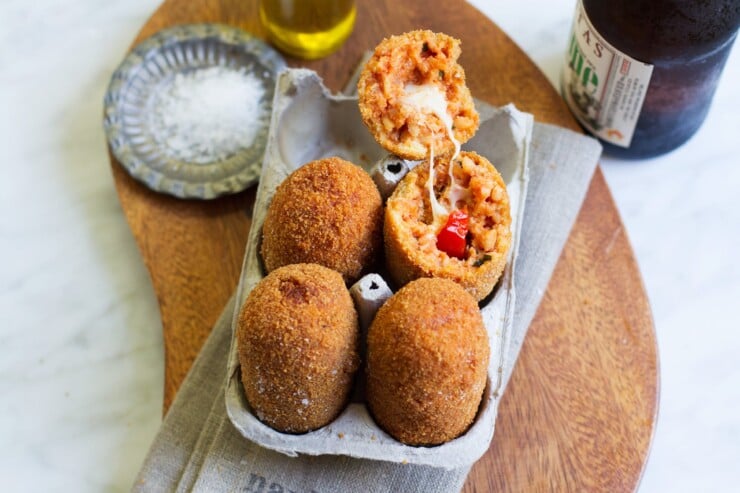
{Supplì al telefono} Mozzarella Tomato Basil Risotto Croquettes Recipe
Speaking of fried food from Rome, these classic risotto croquettes, aka supplì al telefono, will have you instantly transported to the city’s vibrant street food scene. We’ve always loved these risotto croquettes but found our favorite ones when our Aida Mollenkamp dove deep into the Roman street food scene for her travel show, Off Menu.
On the topic of Italian rice croquettes, there is a difference between supplì and arancini. Supplì are the Roman version, typically have a cheese filling, whereas arancini are Sicilian fried rice balls and often have a filling of meat sauce and peas.
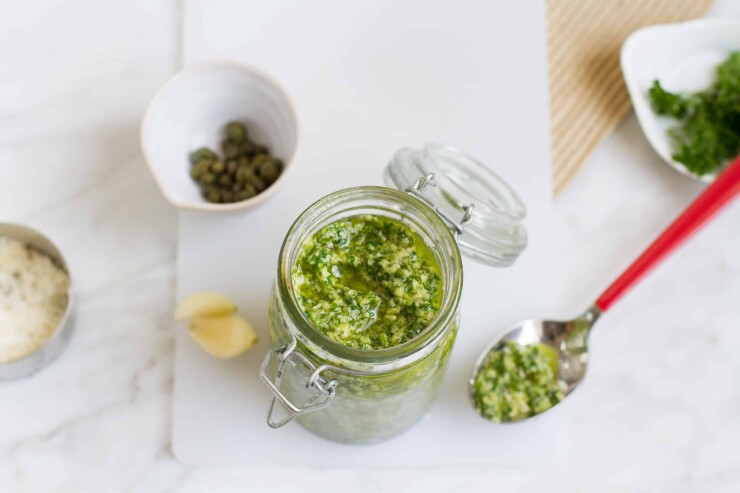
{Salsa Verde Alla Piemontese} Italian Herb Sauce Recipe
Looking to jazz up those fried zucchini blossoms or risotto croquettes even further? Turn to this sweet-sour, herby sauce known as salsa verde.
Hailing from the Northern Italian region of Piedmont, this sauce is classically used as an accompaniment to boiled or braised meats. Through some very informal taste tests, we can attest that it goes well beyond meat and works with just about anything (panini! poached eggs! roast chicken!).
Side note: even though both sauces are seriously delicious, this one has nothing to do with the Mexican tomatillo-based sauce also known as salsa verde.
Classic Italian Salad Recipes
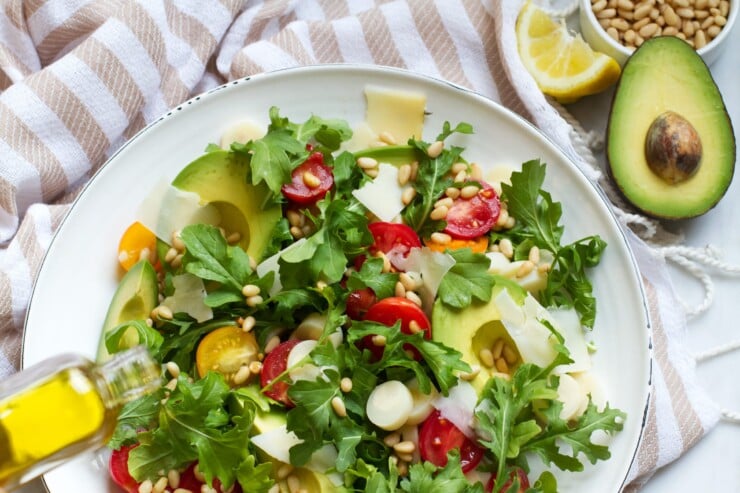
{Insalata Del “Garga”} Garga Salad Recipe
Why is this simple summer salad from Garga restaurant in Florence (now known as Trattoria Gargani) so popular? Yes, the combination of arugula, pine nuts, tomatoes, avocados, and hearts of palm is seriously delicious.
But it stood out because it was one of the first restaurants in Florence to serve a salad that had more going on than the classic mixed-green side salad that’s so commonly served in Italy.
The original chef and owner, Giuliano, was a total tour de force, entertaining diners with his antics one minute, then running to his not-so-legal barge-cum-garden on the banks of the Arno to pull fresh basil the next.
If you go, our perfect meal starts with this salad, followed by the order of the tagliata di manzo or the scalloppine di avocado.
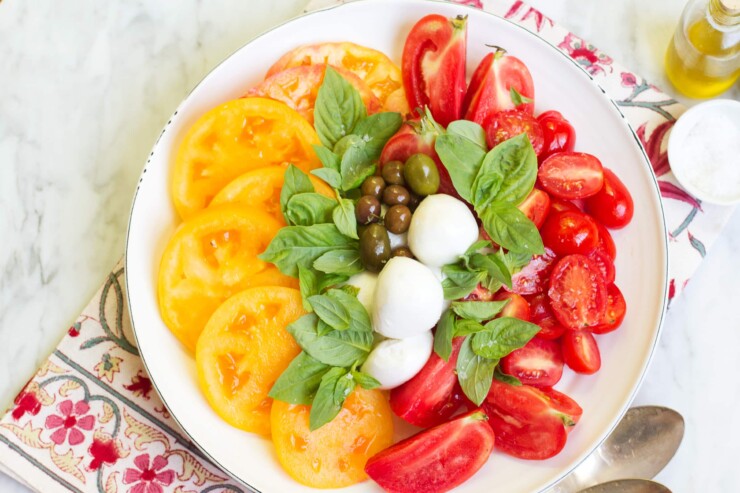
{Insalata Caprese} Classic Caprese Salad Recipe
On the topic of truly legendary salads: we’d be remiss not to talk about the classic Caprese salad.
Legend has it that this food from Campania is thanks to a particularly patriotic bricklayer from the island of Capri created this simple combination of tomatoes, mozzarella, and basil as a nod to the Italian flag’s red, white, and green colors.
If you make it yourself, buy the best ingredients you can get your hands on (we don’t usually make it unless we can get super fresh tomatoes). Oh, and a pro tip: it’s sacrilege to add in balsamic vinegar!
Classic Italian Bread Recipes
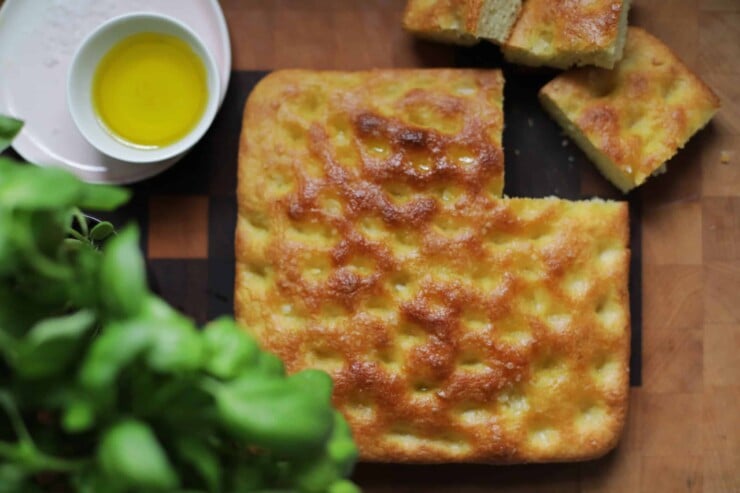
{Focaccia Genovese} Classic Genoa-Style Focaccia Bread Recipe
Dipped in a cappuccino for breakfast, turned into a sandwich for lunch, as a quick afternoon snack, or toasted for dinner, Italians can find an excuse to eat focaccia almost any time of the day. This is our recipe for classic Genoa-Style focaccia that’s a bit salty, extra bouncy, and has a great crust.

{Schiacciata All’Uva} Tuscan Grape Focaccia Recipe
Schiacciata is the Tuscan focaccia version found all over the city. What is the difference from the better-known Genoan focaccia?
It comes down to the technique. The term schiacciata means “squashed” or “pressed,” so when you make the Tuscan version of focaccia, you press the dough down with your fingers rather than using a rolling pin.
Schiacciata all’uva is a seasonal version of the bread made with leftover wine harvest grapes and is usually only found in Tuscany during September.
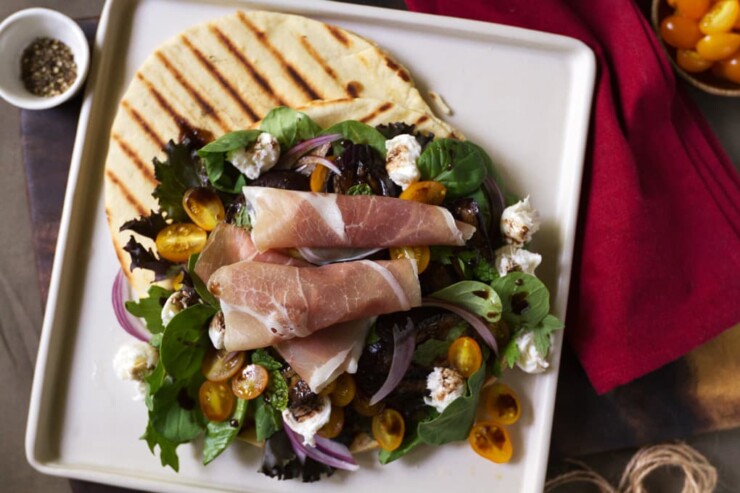
Charred Eggplant and Spicy Greens Grilled Piadina Recipe
Though you may not find this unique dish too often outside Italy, we promise it’s worth searching out!
The piadina is an Italian flatbread that originated in the region of Romagna and is always at the top of our list of what to scope out when we travel to that area. Loaded with spicy greens, creamy mozzarella, and salty prosciutto, our twist on the classic piadina is open-faced and topped with a drizzle of extra virgin quality olive oil and balsamic vinegar.
Classic Italian Soup Recipe
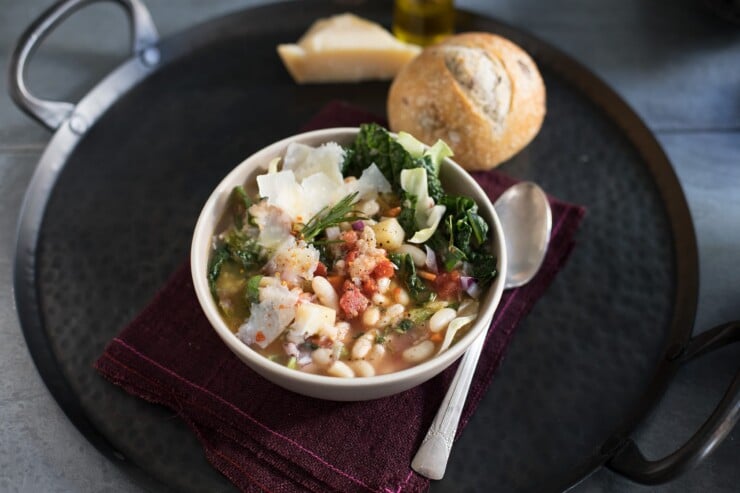
{Ribollita} Tuscan Bread Vegetable Soup Recipe
Like panzanella and so many other Tuscan recipes, ribollita soup comes from the cucina povera, aka the historic “kitchen of the poor.” Ribollita translates to “reboiled” and was a way to use up leftover ingredients and stale bread.
It also remains a super nutritious and comforting stew for cold weather when a cozy night is in order. Keeping with tradition, this soup is a delicious way to give new life to any leftover veggies.
For something similar, try its cousin soup, pappa al pomodoro, which is perfect for using up excess tomatoes.
Classic Italian Side Recipe
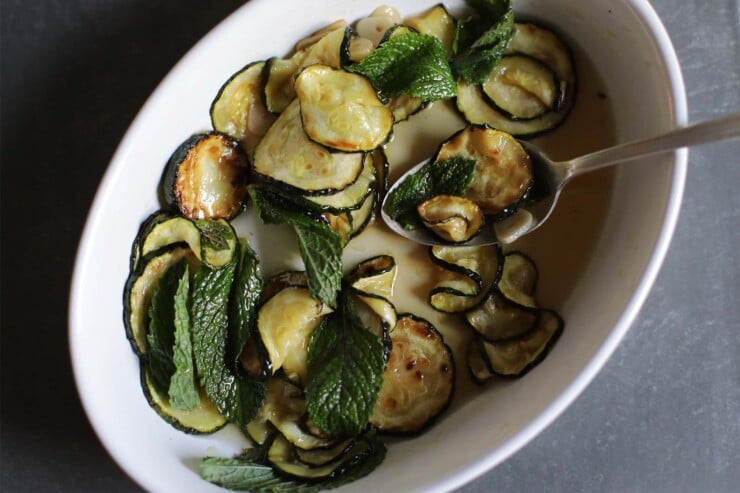
{Zucchine Alla Scapece} Fried Zucchini With Mint Recipe
Say “ciao” to Zucchine Alla Scapece — an Italian recipe that seems to have always been a staple in our cooking repertoire. We’re not sure when we first had it or where but it’s long been a go-to summer recipe.
Zucchine Alla Scapece is a classic recipe from Italy that we eat when the days are too hot to think about cooking. Eat it as a side or pile it on toast with a ball of fresh mozzarella or a spoonful of ricotta for an impromptu meal.
Classic Italian Pasta Recipes
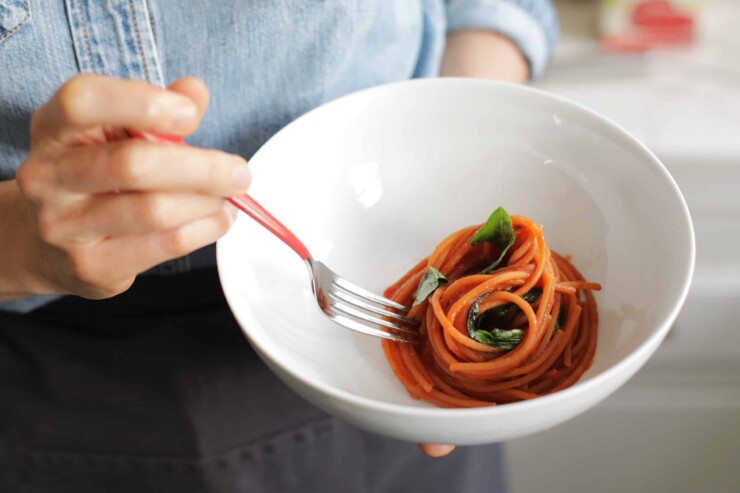
{Pasta Al Pomodoro} Classic Quick Tomato Basil Pasta Sauce Recipe
Tomato, basil, and garlic come together in this one of the quintessential pasta sauces. This is a quick-cooking sauce (you want the “freshness” flavor of the tomatoes intact!), so you can make the sauce in the time it takes the pasta water to boil and cook!
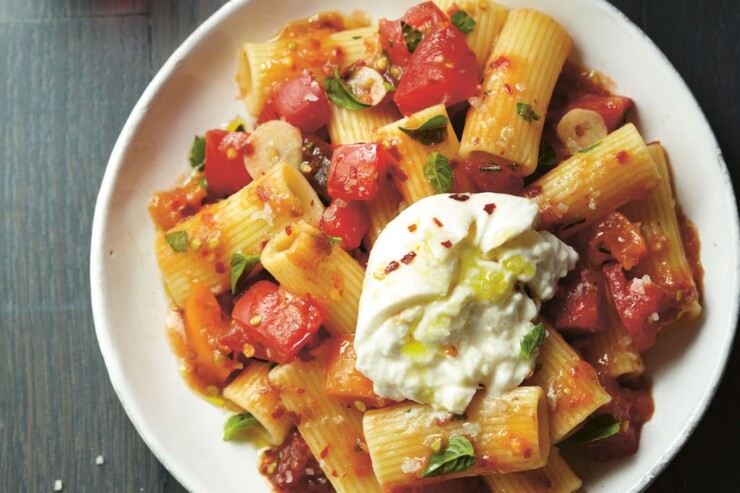
{Pasta Alla Checca} No-Cook Heirloom Tomato Sauce Recipe
The only fresher than pasta al pomodoro is this fresh heirloom tomato sauce. Except maybe when you finish that very pasta with some fresh burrata. The classic pasta alla checca uses an uncooked tomato sauce, meaning those tomatoes had better be super fresh to give the dish flavor.
We make our variation on the classic by marinating the tomatoes in good-quality olive oil and then topping it with burrata and flaky sea salt.
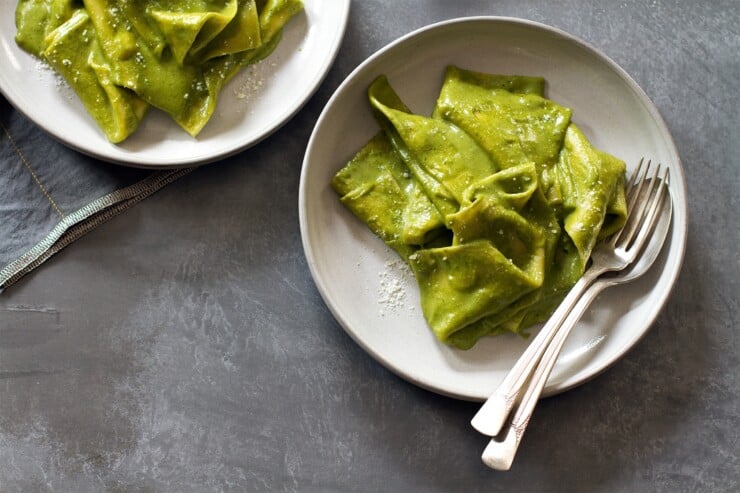
{Mandilli di Seta} Handkerchief Pasta with Creamy Pesto Sauce Recipe
Everyone at Salt & Wind Travel agrees that this is one of the best pasta sauces on the site (and maybe ever created), and for a good reason — it’s a super creamy and authentic Genoan pesto (as in sans cream).
Coat the mandilli (basically super-thin lasagna sheets) in the pesto, fold them over, and the result is one of the most luxurious pasta you’ll ever taste.
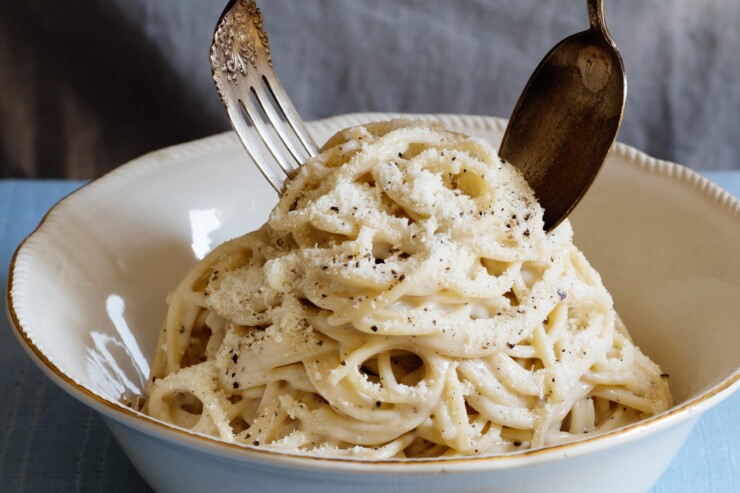
{Cacio e Pepe Di Leonardo Vignoli} ClassicCacio e Pepe Pasta Recipe
If you’re not on board with our stance on pasta with heirloom tomato sauce and burrata, then perhaps you’re one to believe that Cacio e Pepe is the end-all-be-all classic Italian recipe. To be honest, we’re pretty sure there’s no wrong answer.
Either way, try cacio e pepe where it originated: Rome and preferably at Trattoria da Cesare al Casaletto, one of our favorite restaurants in the city.
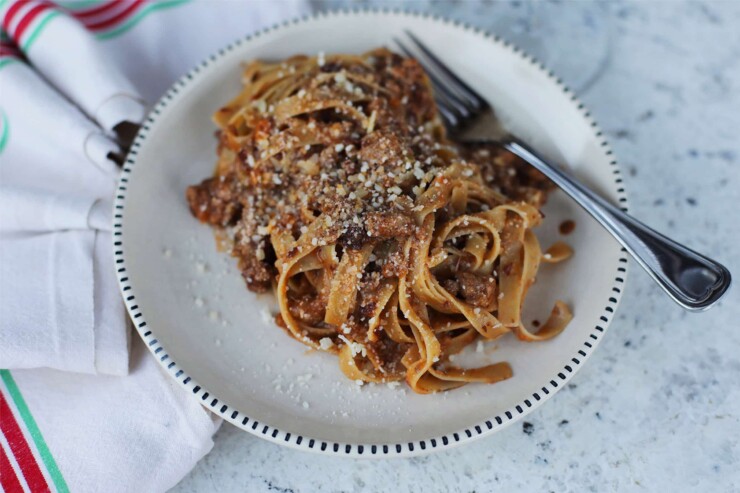
Ragù alla Bolognese Pasta Sauce Recipe
This pasta sauce is named for the town of Bologna from which it hails, and though there are many variations of this recipe, this one follows all the rules of a classic ragù alla bolognese.
It uses cured pork (ideally something from the region like prosciutto), calls for a minced mirepoix, doesn’t use too many tomatoes, and has dairy added at the end (a key to making the sauce silky). And it’s the classic sauce use for Lasagna Verde aka the most classic lasagna from Bologna.
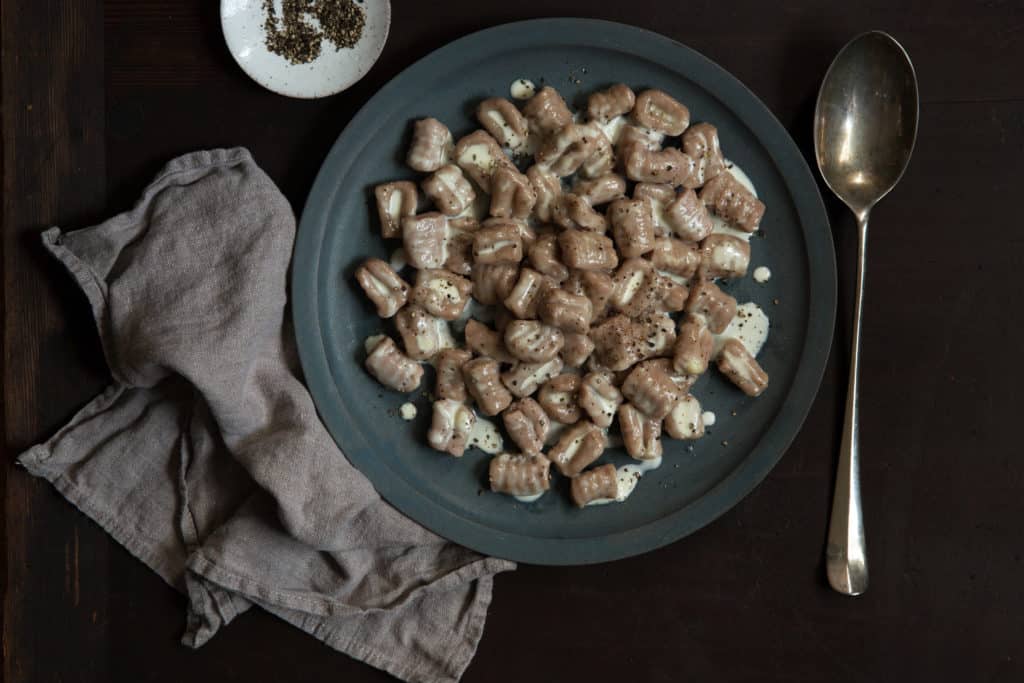
Chestnut Gnocchi with Robiola Bosina Cheese Sauce Recipe
Gnocchi lovers, cheese lovers, and everyone in between rejoice: this version of the epic Piedmont-originated gnocchi is everything your heart could ever wish for.
Made with chestnut flour, the airy and nutty-tasting chestnut gnocchi get drenched in a simple-to-make yet complex-in-flavor cheese sauce. The sauce is made with the local cheese akin to brie, made with a mix of cow’s and sheep’s milk, and known as robiola bosina.
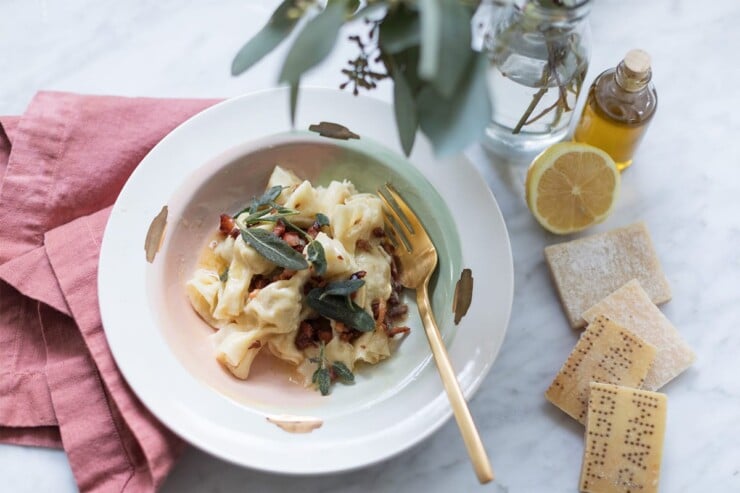
Casoncelli Pasta With Pancetta Brown Butter Sage Sauce Recipe
This pasta is pretty unknown outside its home region of Lombardy, but we think it should be way more known. The candy-wrapper-shaped pasta is adorable, and the filling — a sweet-savory mix of pears, amaretti, and sausage — is incredibly delicious!
Classic Italian Main Recipes
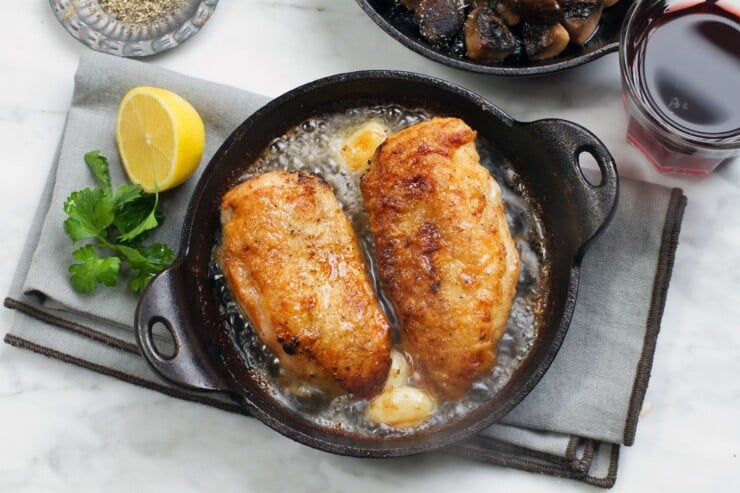
{Pollo Al Burro} Sostanza Brown Butter Chicken Recipe
This version of brown butter chicken, or pollo al burro, is inspired by how they do it at the legendary Florentine restaurant, Trattoria Sostanza. The place has been cooking this butter chicken of epic proportions for nearly 150 years.
And, for as long as they can remember, our Aida Mollenkamp has been loyally making the version they created after first trying it one trip to Florence. As for those epic proportions, fear not how much butter it calls for but just trust in the ways of Sostanza!
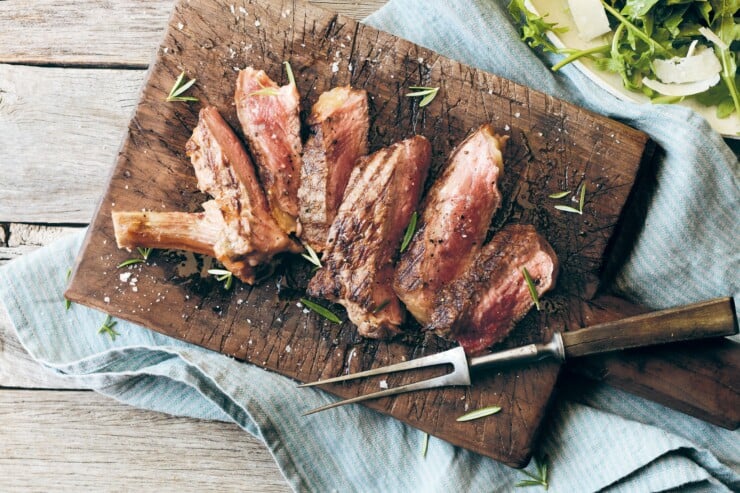
{Tagliata Di Manzo} Florentine Steak Recipe
Okay, have we made it clear that we kind of have a major thing for Florence and its phenomenal cuisine? Served with arugula and shaved parmesan, this Florentine steak dish known as tagliata di manzo is an absolute showstopper.
Note the difference between tagliata and bistecca fiorentina: tagliata is just the rump (sirloin) or rib-eye (bone-in). At the same time, bistecca fiorentina is an enormous cut along the lines of a tomahawk chop that includes not only the tagliata but also meat from below the rib cage and from above the rump.
Both cuts originate in Tuscany and are historically made using chiannina beef which is not only one of the oldest breeds in the world but has been raised in Tuscany for more than 2,000 years. Bottom line: these are two dishes you want to order when you’re in the region.
Classic Italian Dessert Recipes
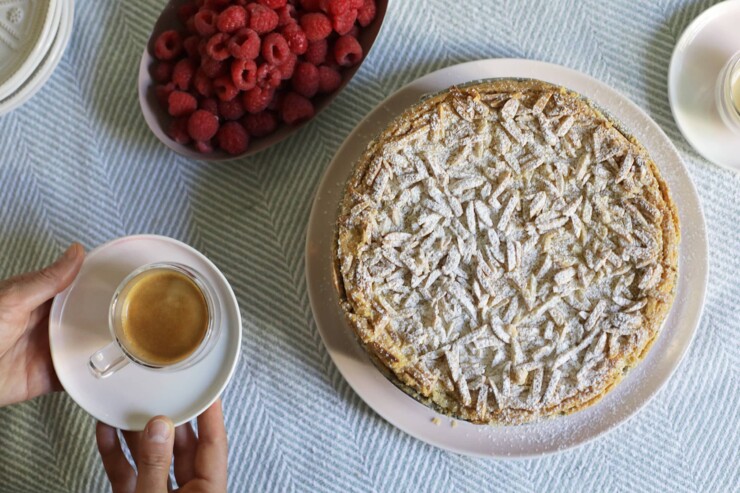
{Torta Della Nonna} Tuscan Grandmother’s Cake Recipe
How could we talk about classic Italian recipes without diving deep into dessert?
Possibly tied with cantucci e vin santo (aka almond biscotti and sweet dessert wine) as the most ubiquitous dessert in Tuscany, Torta Della Nonna is one of the most classic Tuscan desserts you’ll come across when you travel to Italy.
Made by topping a shortbread crust with a lemon and vanilla pastry cream, a smattering of nuts (sometimes pine nuts, other times almonds), and a veil of powdered sugar, it’s simple in its execution but delicious in taste. Like so many other classic Italian desserts, it’s subtle, not too sweet, and relatively easy.
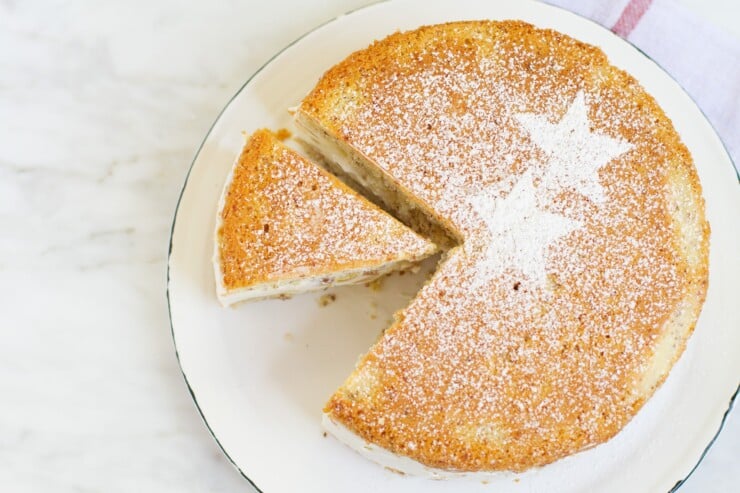
{La Torta Ricotta e Pere di Sal De Riso} Amalfi Pear Ricotta Hazelnut Cake Recipe
This Pear Ricotta Hazelnut Cake is inspired by a recipe from Sal Del Riso, a celebrity pastry chef from the dreamy Amalfi Coast region. It is as delicious as it is beautiful, we promise.
By the way, we recommend switching up the fruit from pears to peaches to berries based on the season.
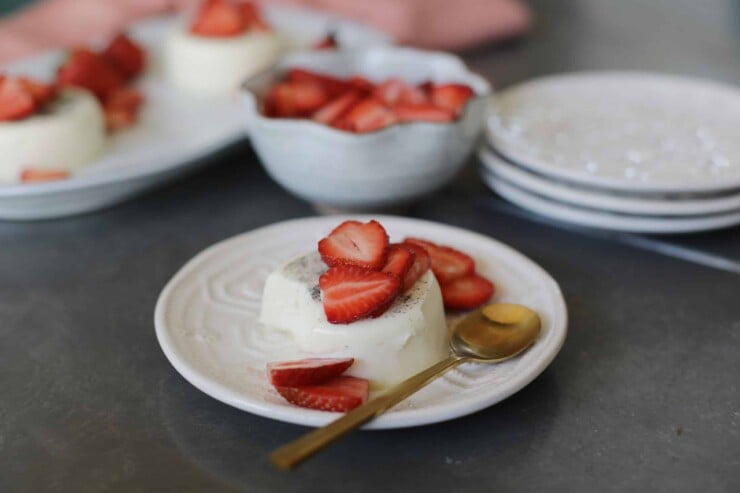
Classic Panna Cotta Recipe
As we’ve discussed before, panna cotta is one of the most classic Italian desserts. It comes from the Northwestern region of Piedmont where it’s one of the most iconic recipes from the area.
It’s said that the recipe dates back to the early 1900s when a woman in the town of Cuneo first made the recipe. These days the dish is so associated with this corner of Italy that the Region of Piedmont has it on its list of local traditional foods.
There you’ll often find the panna cotta original recipe made with a touch of rum or marsala but without any garnish. We prefer to make this super easy version and then add any sauces once we serve it.
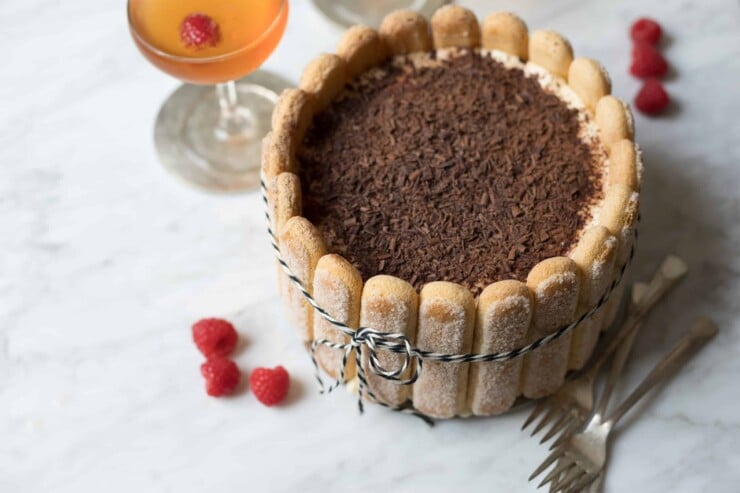
Tiramisu Cake Recipe
Similar to a trifle it is most commonly made by layering Savoiardi sponge cookies (aka ladyfingers) that are dipped in espresso with a light-as-air cream that’s a mixture of mascarpone cream, sugar, and eggs.
Here we take the Italian dessert and shape it into a cake form for a modern but just as simple take on the classic.
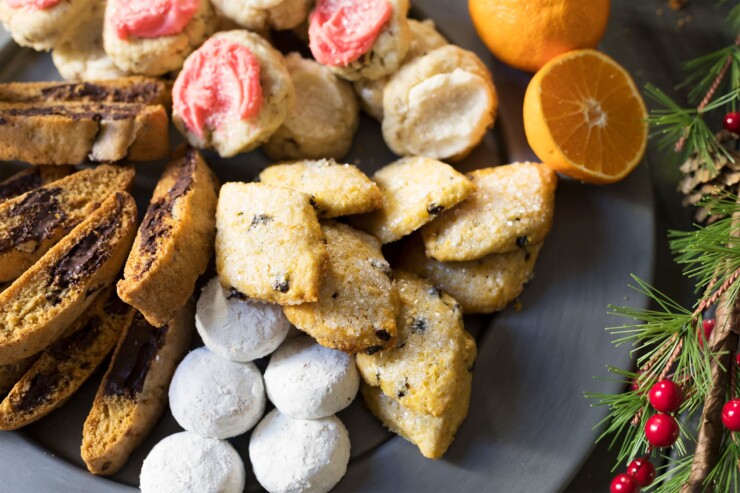
{Zaletti} Cornmeal Currant Italian Cookie Recipe
We love Italian cookies because they’re simple to make, not too sweet, and always super interesting. These Venetian cookies, known as Zaletti with currants, cornmeal, and almond liqueur, are just that! So get in your kitchen and try this recipe or search for them when you next travel to Venice!
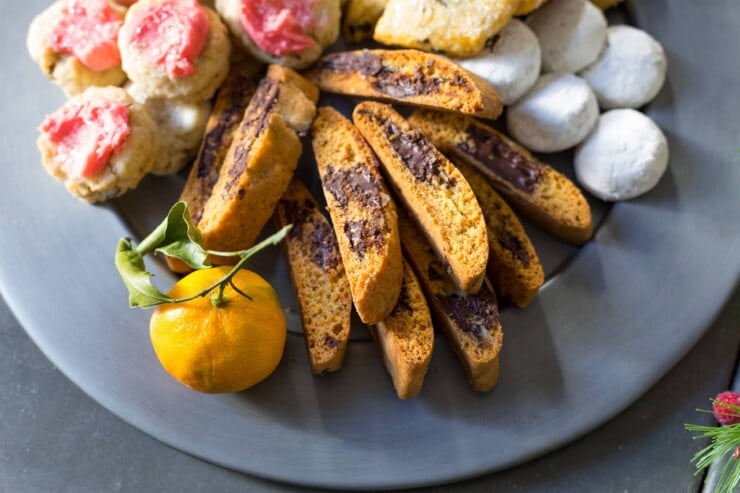
Chocolate Chunk Orange Biscotti Cookie Recipe
There are a lot of Italian cookies to love but arguably none are better known than biscotti.
When you travel to Italy, you may get served a biscotti alongside an afternoon espresso, and you’ll see bakeries everywhere selling all sorts of varieties. We like making this chocolate orange-flavored biscotti but this base dough would be just as good with a mix of, say pistachios and lemon or even aniseed and vanilla!
Have Us Plan Your Italy Trip
Did you know we’re also a boutique travel agency that specializes in Italy travel planning? If you’re looking to plan one of the best trips to Italy, our Italy trip planner services are here to help you plan your perfect itinerary.